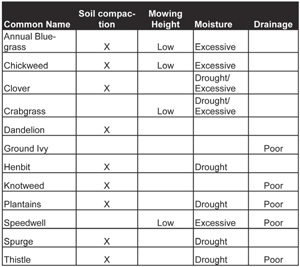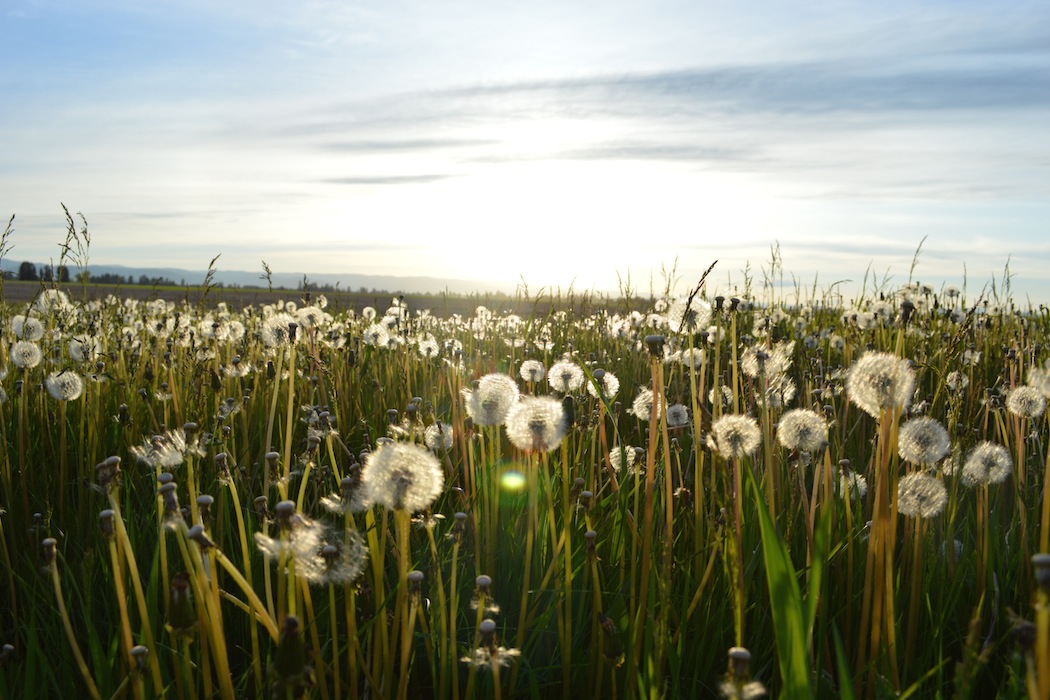A simple guide to understanding why weeds are present in your lawn.
Understanding why you have certain weeds in your lawn is actually surprisingly simple.
In this article, we’ll talk about what you can do to optimize your own lawn and get rid of pesky weeds.
First, it’s important to understand that when we apply a weed control application we are only controlling the weeds that are growing above the soil at the time of the application. Weed control applications do not prevent new weeds from germinating. So understanding why weeds grow in lawns is a key step to winning the battle. Weeds will thrive in lawns that are improperly watered, mowed too short and/or have compacted soil.
Use the following chart to identify the weeds in your lawn and correct the condition that is promoting the growth. For instance, if violets are a problem they often indicate compaction and excessive watering. Aeration and proper irrigation would correct the condition that promotes the weed growth.
Compaction: If the lawn is hard and full of weeds, aerate to help air, water, and nutrients to enter the root zone.
Mowing Height: Bad mowing practices cause many lawn problems. Mowing too low allows sunlight for weeds to germinate (see the article in the sidebar about 30,000-year-old seed germinating.) Mowing in the same pattern causes ruts. Mowing too short also exposes the root zone to insect and disease problems.
Thatch is a dense layer of grass stems and roots on the surface of the soil. Typically a symptom of shallow watering. When the layer becomes 1/2†or more the roots will grow up within the thatch instead of the soil making the grass susceptible to insects, disease and weather stress. Reduce thatch by aeration and organic matter to reintroduce microorganisms.
Watering and Poor Drainage: Drought conditions, excessive watering or poor drainage are invitations for weeds. Watering needs are very site specific but generally speaking, Michigan lawns require at least 1†of irrigation, spread out over the week under normal conditions. During drought conditions, lawns require more irrigation, as much as 2 inches over the week.
Grass Seeding: Varieties differ enormously in quality, some weeds are the result of poor quality seed. Overseed with quality seed for our region and specific to your lot conditions. The goal is to promote dense turf to crowd out weeds.

Where ever there are bare areas or thin turf, weeds will prevail. Keeping your turf dense and cut high will crowd out weeds and help stop weed seeds from germinating.
